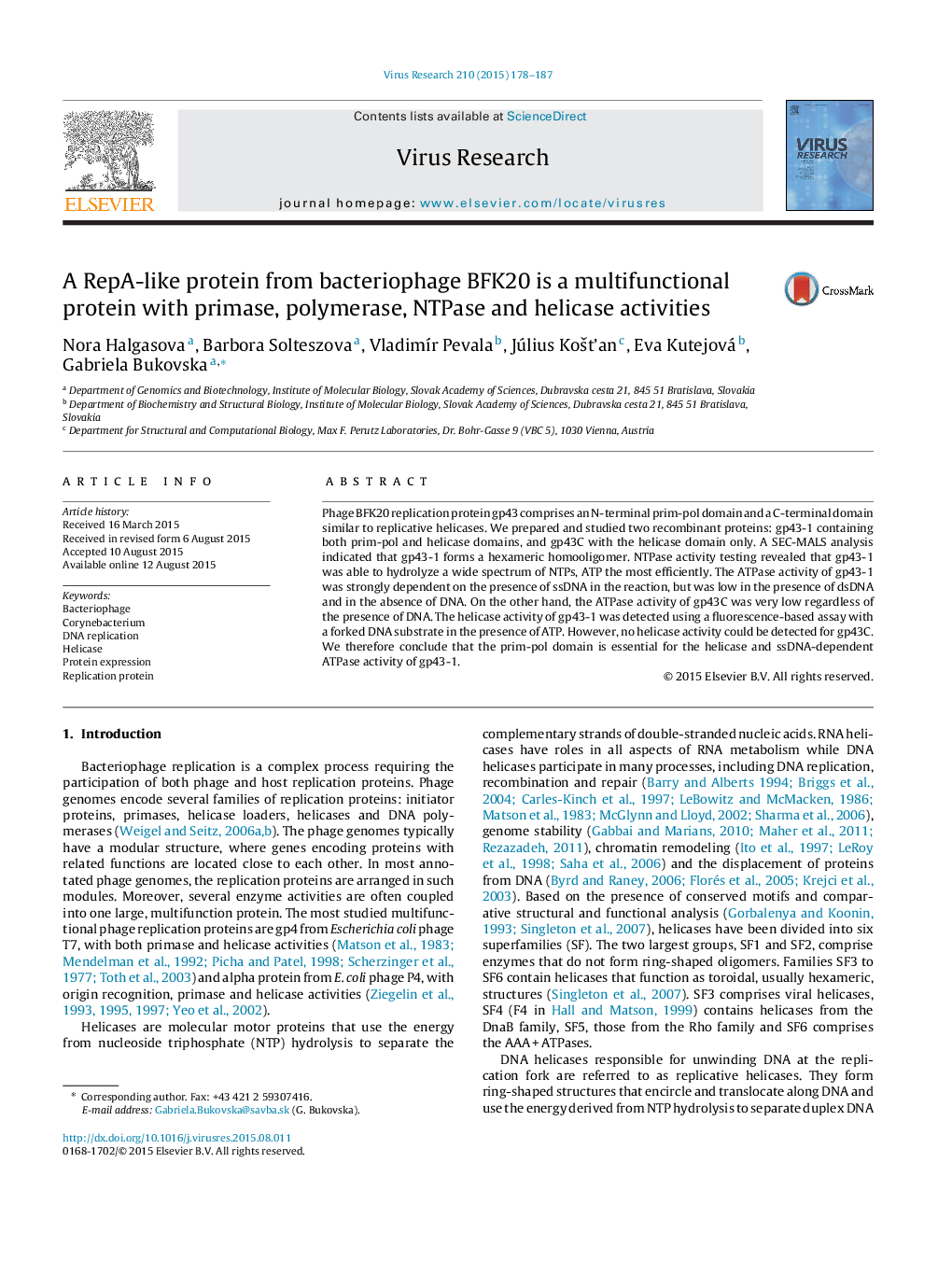| Article ID | Journal | Published Year | Pages | File Type |
|---|---|---|---|---|
| 3428051 | Virus Research | 2015 | 10 Pages |
•Phage replication protein gp43 comprises a prim-pol domain and a helicase domain.•We studied two proteins: gp43-1 with both domains and gp43C with the helicase domain only.•Gel filtration showed that both proteins assembled into higher oligomers.•Gp43-1 had strong ATPase and helicase activities; gp43C had a low ATPase and no helicase activity.•We infer that gp43 is a replicative helicase and that both domains are essential for this function.
Phage BFK20 replication protein gp43 comprises an N-terminal prim-pol domain and a C-terminal domain similar to replicative helicases. We prepared and studied two recombinant proteins: gp43-1 containing both prim-pol and helicase domains, and gp43C with the helicase domain only. A SEC-MALS analysis indicated that gp43-1 forms a hexameric homooligomer. NTPase activity testing revealed that gp43-1 was able to hydrolyze a wide spectrum of NTPs, ATP the most efficiently. The ATPase activity of gp43-1 was strongly dependent on the presence of ssDNA in the reaction, but was low in the presence of dsDNA and in the absence of DNA. On the other hand, the ATPase activity of gp43C was very low regardless of the presence of DNA. The helicase activity of gp43-1 was detected using a fluorescence-based assay with a forked DNA substrate in the presence of ATP. However, no helicase activity could be detected for gp43C. We therefore conclude that the prim-pol domain is essential for the helicase and ssDNA-dependent ATPase activity of gp43-1.
